The Likert Scale has widely been used in measuring feelings or attitudes among the respondents of a survey or a questionnaire. It purports to measure opinions in an orderly form from strongly disagree to strongly agree. This is one of the best ways through which most issues including customer satisfaction and employee morale can be measured. If you have ever encountered any rating system that inquired about the level of agreement, you have used a Likert Scale. In this blog, see what a Likert Scale is, how it is different from other types of scales, and the various types of Likert Scales available to give a new dimension to your presentations. Now let’s see just how well it works!.
What is a Likert Scale?
The Likert Scale is a psychometric tool used to initially measure attitude or opinions. It is named after its originator, the psychologist Resins Likert, who introduced it in 1932. This scale measures the degree of a respondent’s agreement with a question or statement. It generally consists of 5 or 7 scale points, ranging from negative to positive. This allows the determination of the direction-some opinions being positive and others negative-and the intensity-being weak or strong, of an opinion.
A regular question using a Likert Scale would go as follows: “How would you rate your satisfaction with our customer service?” Strongly Disagree | Disagree | Neutral | Agree | Strongly Agree
Each of these responses can be given a numerical value, such as 1 for Strongly Disagree and 5 for Strongly Agree, in order to make analysis rather effortless when data is collected from these. The Likert Scale is very simple, yet rich in actionable insights, since it captures not whether a person agrees or disagrees, but how strongly he or she feels about it.
Likert Scale vs. Semantic Differential Scales
Although at times thought of synonymously, Likert Scales and Semantic Differential Scales are actually used to perform different tasks in survey research.
- Likert Scale: This is a scaling method applied to questionnaires in which respondents are asked to indicate their degree of agreement or disagreement with a given statement by selecting from a range of options running from strong disagreement to strong agreement. It is a measure of the attitude or feelings of a person on a given topic, showing the level of agreement with a statement.
- Semantic Differential Scale: The respondent, in this scale, evaluates the degree on a rating scale an object, event, or concept comes between two bipolar adjectives such as from “happy” to “sad,” or from “good” to “bad.” The emphasis in this type of question is more upon the intensity of feelings or perception concerning the concept than with agreement with some statement.
For example, a Semantic Differential Scale might ask the respondent to rate a product between points labelled “High Quality” and “Low Quality.” The respondent marks a point along a line between these two extremes. In this way, subjective evaluation is captured.
The most fundamental difference lies in the fact that the Likert Scale deals with agreement over a statement, while the Semantic Differential Scale deals with the intensity of attitude over two opposing attributes.
Types and Examples of Likert Scales in Interactive Presentations
a. Horizontal Likert Scale
Probably, the most recognizable format is the Horizontal Likert Scale. The options appear next to each other but often range from negative, left to positive, right. In the Likert Scale bias matrix, locating negative responses to the left and positive responses to the right minimizes bias. This arrangement makes sense intuitively because people generally read from left to right, which is how we process information.
Example: How would you rate your overall satisfaction with the features of our products?
Very Disagree | Disagree | Neutral | Agree | Strongly Agree
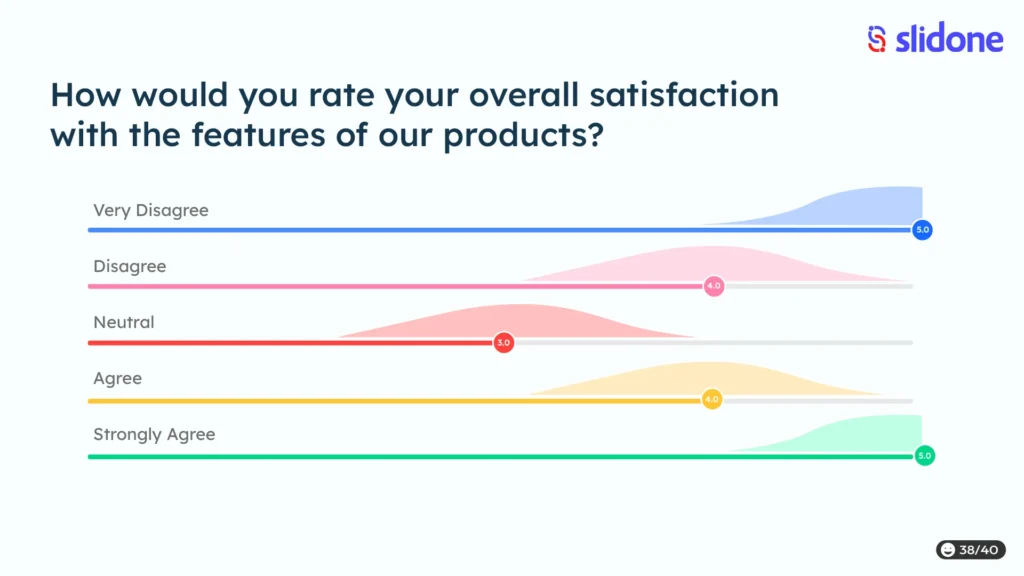
Especially in interactive presentations, this is the perfect format for quick surveys or live polls in which you need immediate feedback. Because all the options are viewed at once by participants, it is much easier for them to make a response rather than overthinking.
b. Vertical Likert Scale
A Vertical Likert Scale orders options from top to bottom, and this is becoming more common in mobile-friendly surveys due to the limited screen space. According to the Likert Scale bias matrix, the least amount of bias can be achieved with this format if the negatives are at the top and the positives at the bottom.
Example: How would you rate your experience with our website?
- Disagree
- Neutral
- Agree
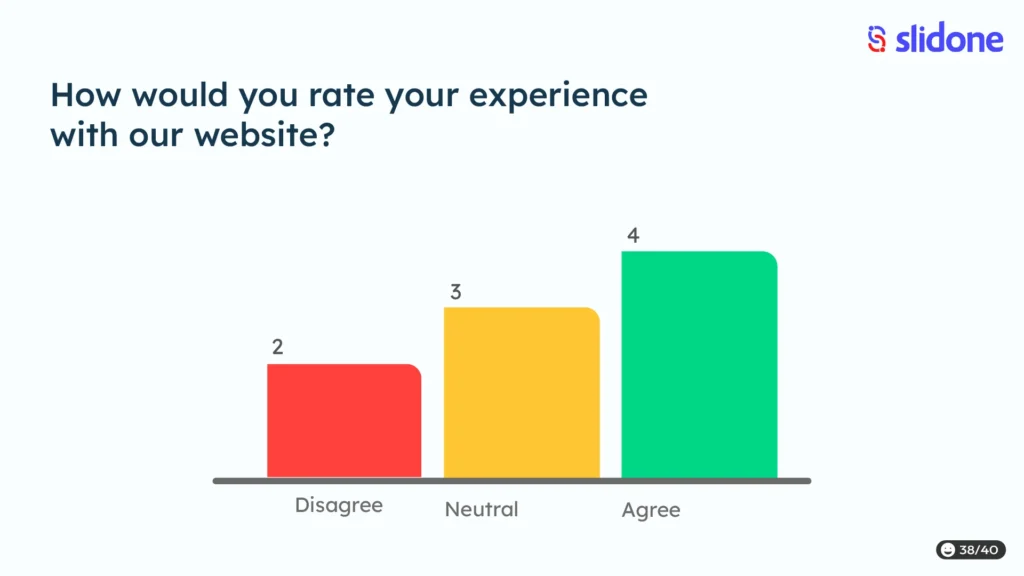
Scales that run up and down work particularly well when working on a small screen size-for instance, for mobile presentations and apps. This would ensure that the respondents would not have to scroll horizontally in order to see all of the options, thus they can provide quicker and more accurate responses.
c. Unipolar Likert Scale
On the other hand, the intensity of one characteristic, such as satisfaction or performance, is measured by a unipolar Likert Scale without introducing an opposite pole. In such a scale, the respondents grade to what extent they feel something, such as satisfaction, and all the options head toward different degrees of presence rather than absence.
Example: How satisfied are you with our delivery service?
- Slightly satisfied
- Moderately satisfied
- Very satisfied
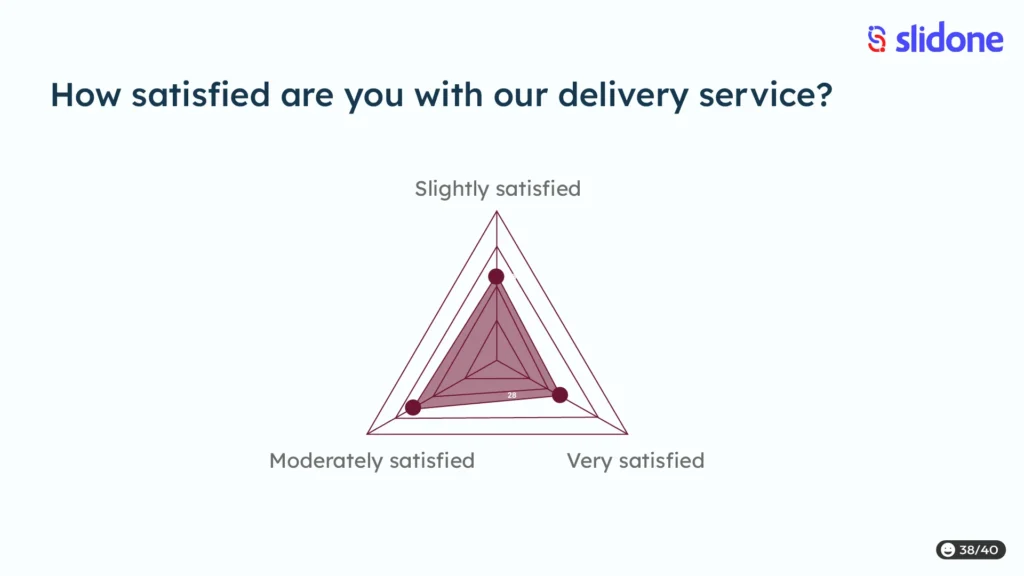
There is no middle neutral in a unipolar scale. Each response goes in the positive direction to capture the exact degree of satisfaction or agreement. While this does not permit mathematical comparisons as does a bipolar scale, in many cases it yields more valid results when one is measuring a singular concept.
d. Bipolar Likert Scale
The bipolar Likert scale measures on the same scale two opposing qualities or attitudes. This scaling method provides balanced choices for the respondent in both directions from a neutral middle. Very often, respondents are asked to consider a statement on a numerical scale, such as from -3 to +3.
Example: How would you rate the quality of our service?
- -3: Very Poor
- -2: Poor
- -1: Somewhat Poor
- 0: Neutral
- +1: Somewhat Good
- +2: Good
- +3:Excellent
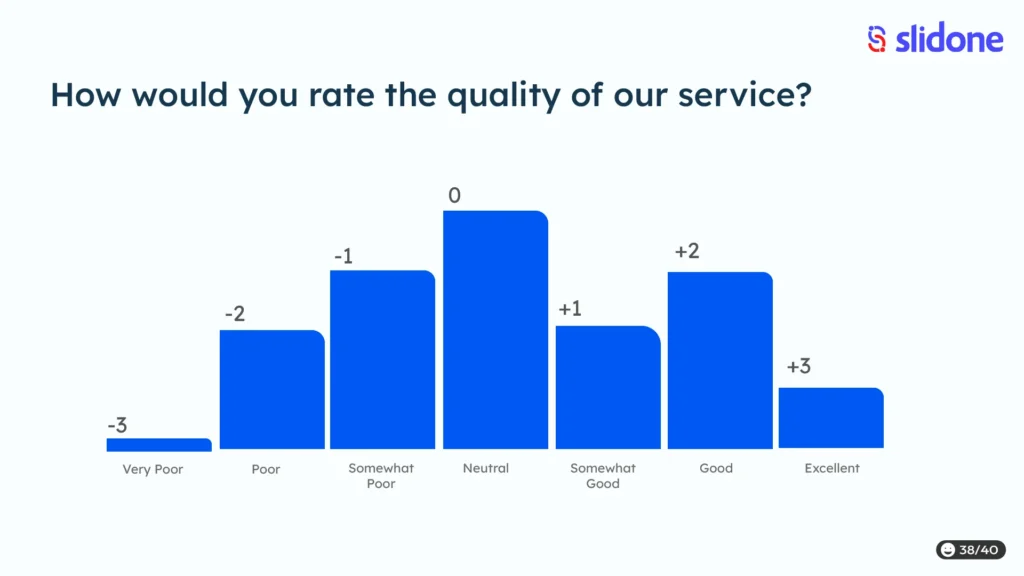
The bipolar scale is balanced from the perspective of the positive/negative feelings of the respondents. This format is useful for situations when you want a clear midpoint for neutrality, giving an easier way to compare the extremes, such as satisfaction versus dissatisfaction.
The Importance of Likert Scales in Your Next Presentation
It should be heeded that the Likert scale has become powerful in measuring opinions and attitudes-be it a teacher seeking feedback from students or even a business in customer insight collection. One of the major advantages the usage of Likert Scales can bring about is the ability of interactive presentations to collect real-time feedback easily and analyse it in an instant to take instant action.
Live polls in presentations provide an avenue for audiences to anonymously give their opinions and offer a really honest idea as to how your content is being perceived. For instance during formative assessment, a teacher may want to ask how good or bad the students felt they knew the lesson material; this can be asked after a lesson is over by using a Likert Scale. Immediate feedback can help the teacher adjust future lessons.
This is the potential to track trends over time. Certain tools, such as Slidone, have inbuilt analytics that allow reviewing responses across multiple presentations. In this case, one will get insight into how the feedback will evolve over time as improvements are made. The data collected through the use of Likert Scales may provide insight into whether changes you are making serve to improve your product or if further adjustments beyond what has been implemented so far are necessary.
By adding Likert Scales to your presentations, you are not only engaging your audience but also harvesting useful insights that might lead you to the improvement of something either in teaching, business strategies, or products. One can choose from different formats, such as horizontal and vertical unipolar and bipolar, which is why, for sure, your audience will provide thorough, accurate feedback using the type of Likert Scale serving your needs best.
Final Words
The Likert Scale is an easy-to-use, versatile tool for measuring opinions and attitudes. Whether you use it in its horizontal, vertical, unipolar, or bipolar forms, it offers clear, quantitative feedback that can lead to meaningful improvements in your work. By incorporating it into your interactive presentations, you can foster greater engagement and gain valuable insights that help you make informed decisions.

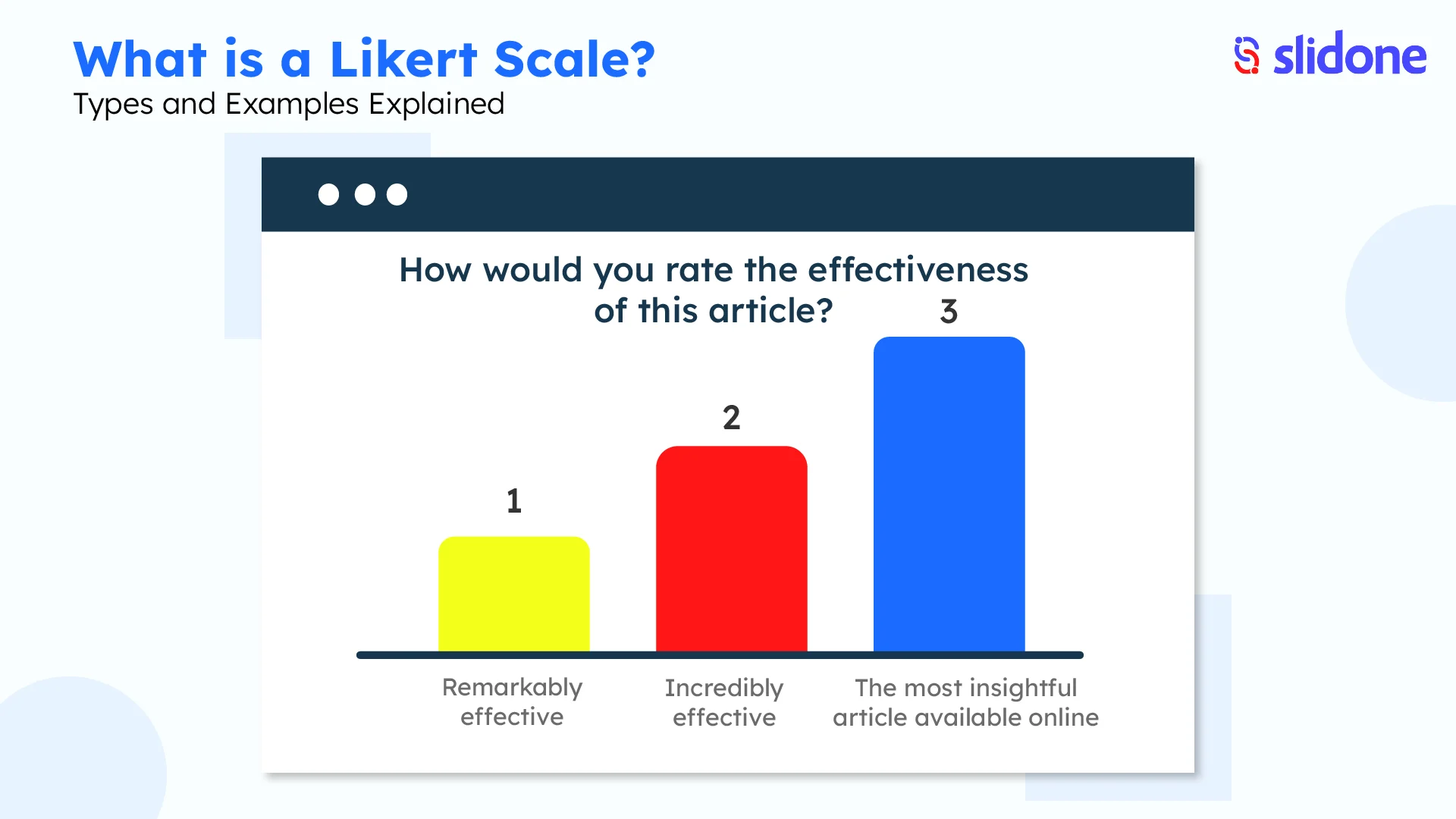

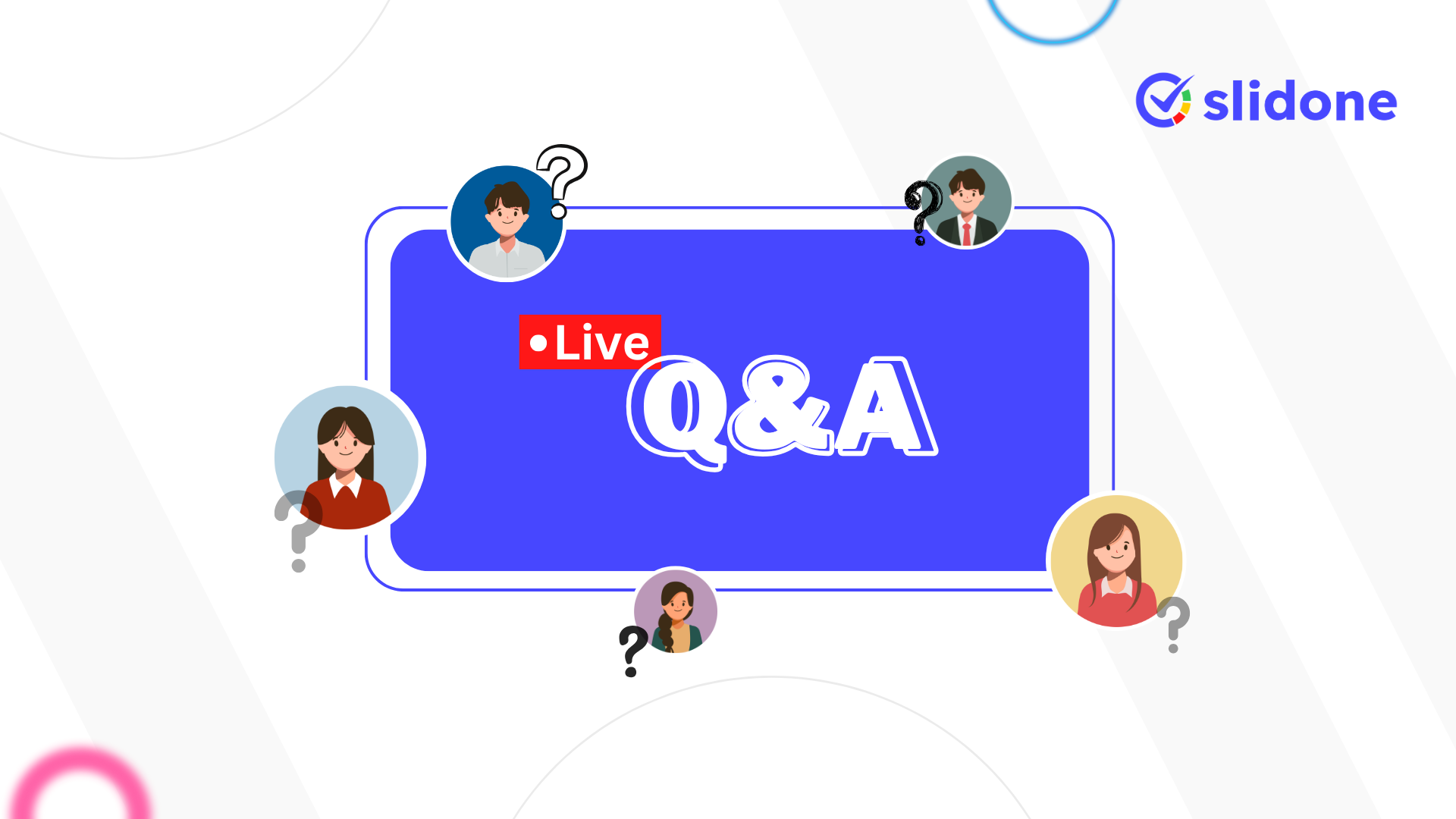
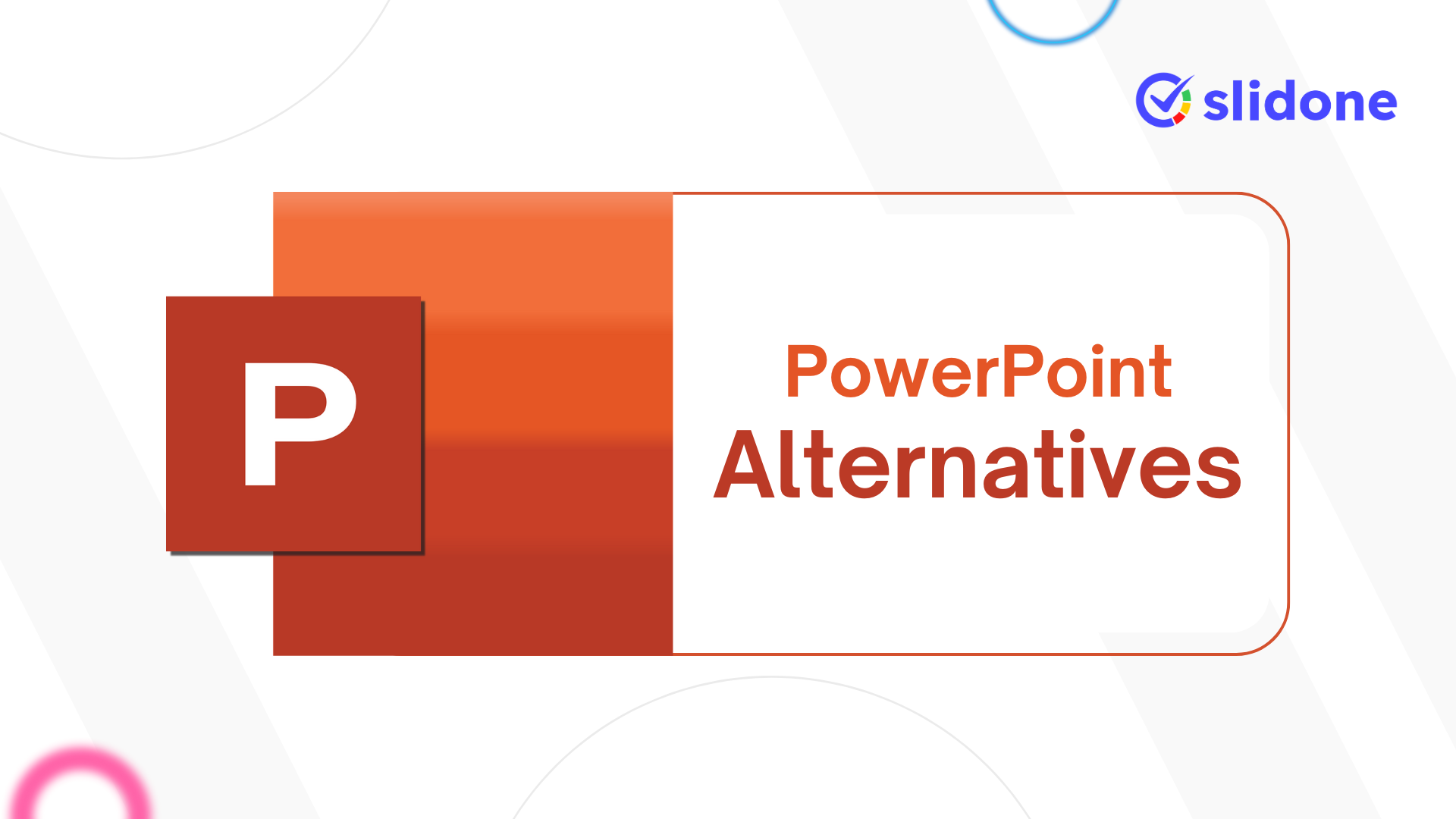
Leave a Comment
Your email address will not be published. Required fields are marked *